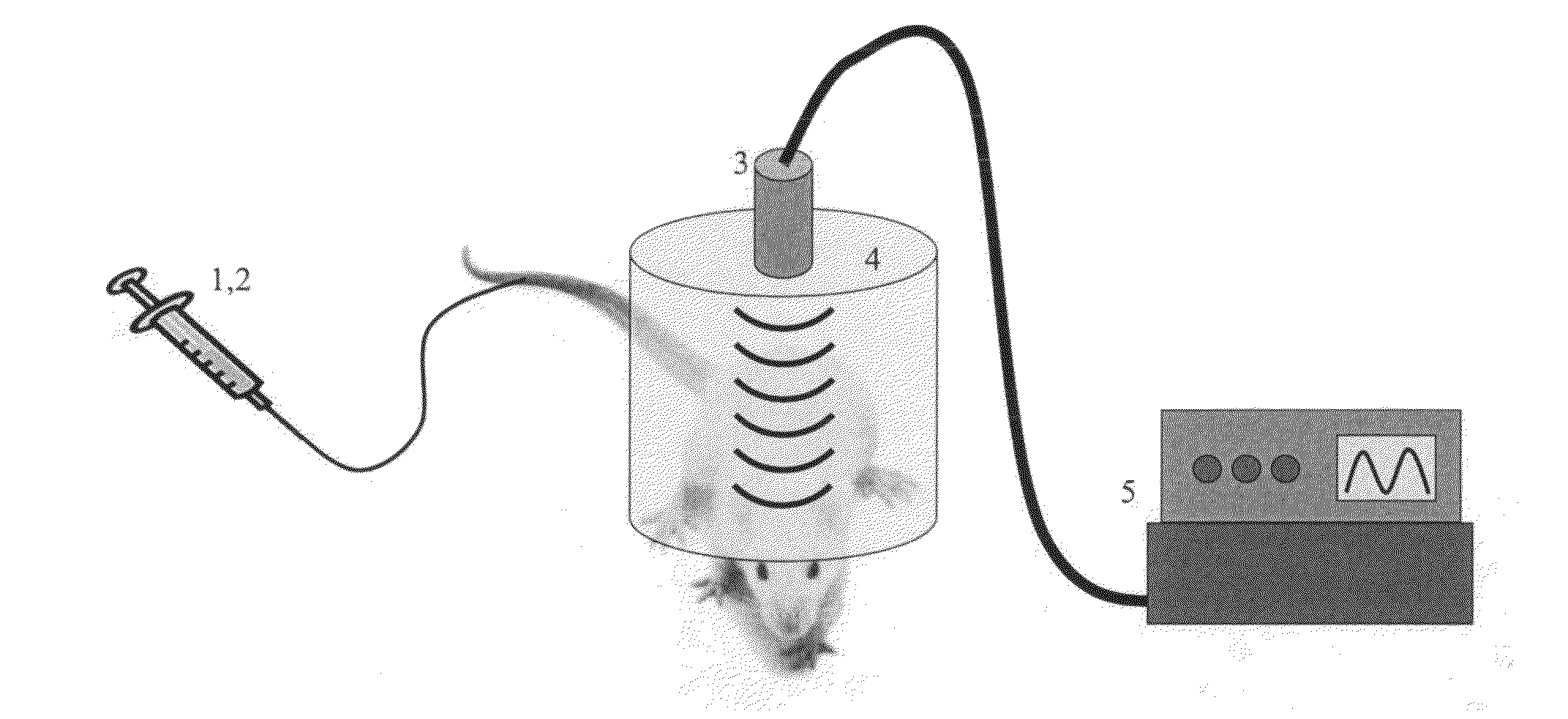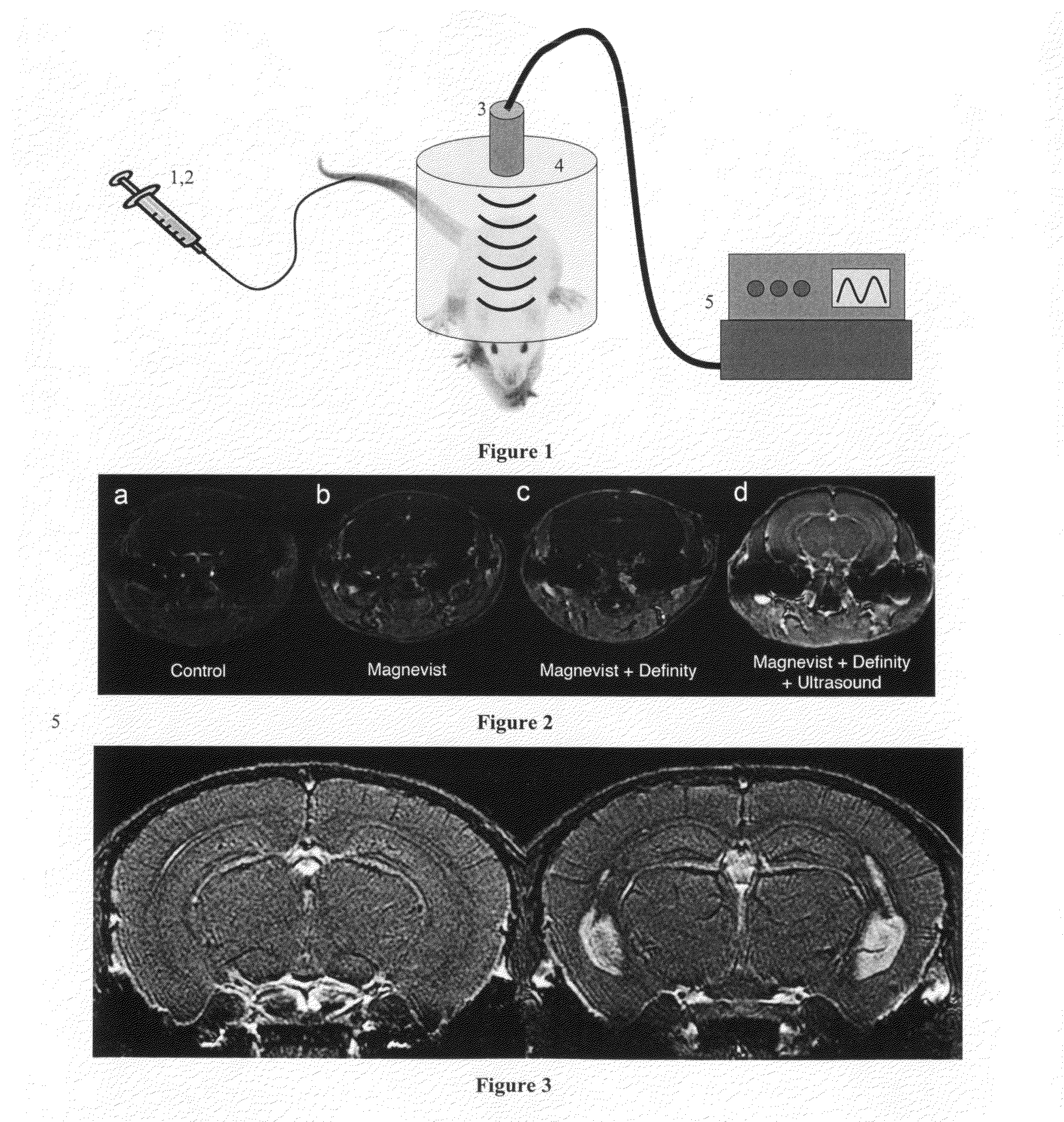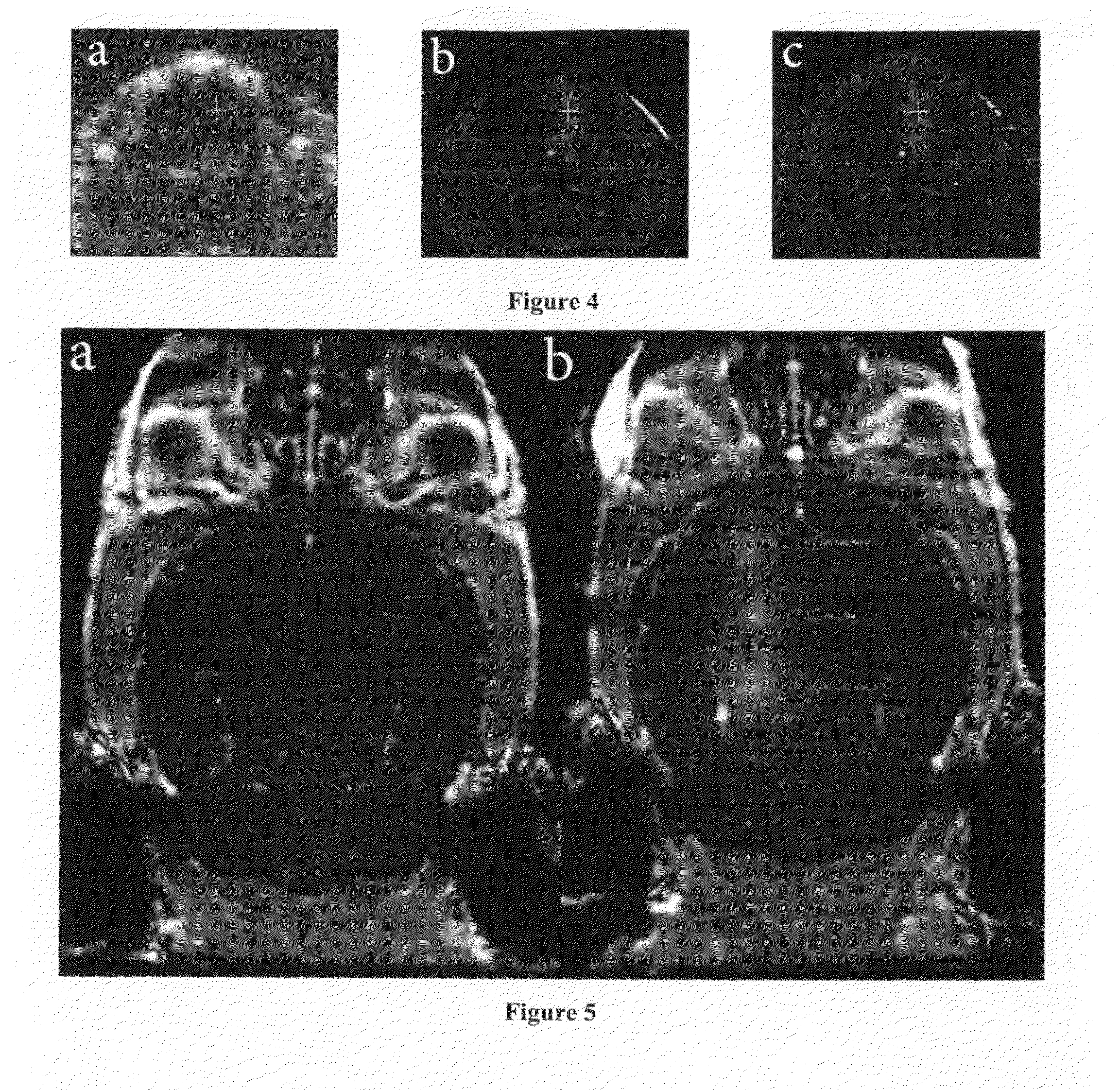Method and apparatus for delivery of agents across the blood brain barrier
a blood brain barrier and agent technology, applied in the field of active staining, can solve the problems of limited bbb region, difficult to extend to mice, limited use of diagnostic and therapeutic agents in the brain, etc., and achieve the effects of enhancing brain imaging, rapid administration, and opening of blood-brain barrier
- Summary
- Abstract
- Description
- Claims
- Application Information
AI Technical Summary
Benefits of technology
Problems solved by technology
Method used
Image
Examples
example 1
In Vivo Magnetic Resonance Microscopy by BOMUS
Methods
[0096]Prior to opening the BBB, perflutren lipid microspheres (Definity, Lantheus, N. Billerica, Mass.) were produced by “activating” the vial (i.e., shaking it in the manufacturer-supplied device for 45 seconds) according to the prescribing information sheet. Immediately prior to microbubble administration, the vial was agitated by hand for 1 minute.
[0097]For insonification a circular single-element ultrasound transducer (model A382S-SU, Olympus NDT) was used, which had a diameter of 13 mm and a center frequency of 2.15 MHz. See, FIG. 14 where panel a depicts the BOMUS setup and panel b depicts the experimental timeline. The transducer was positioned using a 3-axis frame (VisualSonics, Toronto, ON) at its natural focal distance (58 mm) in the water column directly over the mouse brain. The natural focus distance (i.e., the Rayleigh distance) was estimated as d2 / 4 lambda, where d is the element diamete...
example 2
Blood-Brain Barrier (BBB) Disruption Using a Diagnostic Ultrasound Scanner
[0132]The objective of this example was to transcranially and nondestructively disrupt the BBB in the mouse using focused, diagnostic ultrasound and contrast agent, and to quantify that disruption using MRI and MR contrast agent. Each mouse was placed under isoflurane anesthesia and the hair on top of its skull was removed before treatment. A diagnostic ultrasound transducer was placed in a water bag coupled with gel to the mouse skull. Definity (US contrast) and Magnevist (MR contrast) were injected concurrent with the start of a custom ultrasound transmission sequence. The transducer was translated along the rostral-caudal axis to insonify three spatial locations (2 mm apart) along one half of the brain for each sequence. T1-weighted MR images were used to quantify the volume of tissue over which the BBB disruption allowed Magnevist to enter the brain, based upon increases in MR contrast-to-noise ratio (CNR)...
PUM
 Login to View More
Login to View More Abstract
Description
Claims
Application Information
 Login to View More
Login to View More - R&D
- Intellectual Property
- Life Sciences
- Materials
- Tech Scout
- Unparalleled Data Quality
- Higher Quality Content
- 60% Fewer Hallucinations
Browse by: Latest US Patents, China's latest patents, Technical Efficacy Thesaurus, Application Domain, Technology Topic, Popular Technical Reports.
© 2025 PatSnap. All rights reserved.Legal|Privacy policy|Modern Slavery Act Transparency Statement|Sitemap|About US| Contact US: help@patsnap.com



